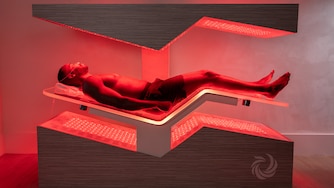Smoother. Bigger. Faster. Amtrak is putting its new Acela trains onto the rails for passengers this week, concluding a more than decade-long process in delivering the fastest trains in the United States.
“They’re beautiful!” exclaimed U.S. Transportation Secretary Sean Duffy at Washington, D.C.’s Union Station Wednesday morning, moments after his department took over the aging station from Amtrak, citing crime and lack of improvements.
The new trains are one of many expensive steps Amtrak is taking — with the help of federal grants — to modernize the Northeast Corridor after what officials called decades of neglect.
The first generation of Acela trains were approaching the end of their “design life,” Amtrak President Roger Harris said in an interview.
Duffy said they were “showing their age.”
Amtrak expected to get 20 years out of the first Acela fleet, Rogers said. They got 25.
The new Acelas, apart from refining the basics with leather seats, power outlets, 5G Wi-Fi and more legroom, are lighter and use new technology that allows the trains to handle curves at higher speeds. They also fit more passengers, which Harris said will help drive down ticket prices.
“Acela isn’t just for titans of industry and politicians,” Harris told the crowd.

His sentiment aside, Acela ticket prices have been a barrier for the everyday rider. The first “NextGen” ride open to passengers, train 2154 departing Baltimore Penn Station at 7:24 Thursday morning, costs $131 one-way to Philadelphia, $304 to New York City, and $526 to Boston.
Booking far in advance typically drives the price down. That same train on a Thursday in November from Baltimore is $55 to Philadelphia, $81 to New York and $88 to Boston if booked today.
Duffy said Amtrak is working on “dynamic pricing” and hopes that more trains and seats will result in lower fares and make Amtrak more competitive with other travel modes.
Amtrak set a ridership record last year, Harris said, and the goal is to roughly double it by 2040.
Getting the new trains wasn’t without hiccups. Nine years ago, Amtrak awarded a contract to private builder Alstom, the same company behind the botched rehabilitation of some Baltimore light rail vehicles. Officials with the French company cited supply chain issues related to the pandemic for the delays in delivering the Acelas, but complications during track testing also contributed.
When passengers step aboard Thursday, they’ll experience some of the latest and best in train technology, Alstom CEO Henri Poupart-Lafarge said.
“This is the most advanced train in the world today,” he said.
But high-speed or not, trains can only go as fast as their tracks and systems allow, as reporters invited on a Wednesday ride to New York City experienced.
The new Acela crawled through Baltimore’s B&P Tunnel like any other train — speeds are limited to 30 mph inside the Civil War-era structure. The future $6 billion Frederick Douglass Tunnel, one of Amtrak’s most expensive capital projects to date, will replace it, and is designed for travel up to 100 mph.

Amtrak is working to alleviate other choke points along the Northeast Corridor, spanning Washington, D.C., to Boston, hanging miles of new electrical lines to power the trains and replacing antiquated bridges. Still, trains can only hit top speed in relatively short segments between cities because of the track alignment.
U.S. passenger rail still, in many ways, lags behind the rest of the world. Earlier this year, Duffy even called Amtrak service “kind of embarrassing.”
In Europe, most major and even many smaller cities are connected by rail and at much more affordable prices. The 300 mph Maglev trains in Japan that wowed Gov. Wes Moore this winter go twice as fast as an Acela.
“I would love to see high-speed rail in America. I don’t think it should just be China, Europe, Japan and others,” Duffy said Wednesday, a comment the crowd greeted with applause. “This is, at 160 mph, one great step in that direction.”
Duffy also addressed the takeover of Union Station, lamenting the station’s condition and saying his department will make it cleaner, attract more businesses and keep out people experiencing homelessness.

“There’s places for the homeless to go, but if you’re traveling with your family, public spaces that the rest of America uses is not a place for the homeless. It’s not a place for crime. It’s a place for clean, beautiful infrastructure,” Duffy told reporters.
The Union Station takeover comes amid an influx of federal law enforcement and National Guard troops patrolling the nation’s capitol at the direction of President Donald Trump to reduce crime. Trump has threatened to take similar actions in other heavily Democratic cities, including Baltimore, despite data showing that violent crime has been trending down in many urban areas.
“The President has been pretty clear about what he wants for Union Station, for American travel, for train travel: He wants Union Station to be beautiful again, he wants transit to be safe again, and he wants our nation’s capitol to be great again,” Duffy said.
The historic station is owned by the federal government but had been managed privately until Amtrak won an eminent domain suit last year. Now, control moves to USDOT, which Duffy told reporters will allow Amtrak to focus on operating the train network.
“We think that we can manage the property better — bring in more tenants, bring in more revenue, and that revenue is going to allow us to make investments in this beautiful building," Duffy said at the station.





Comments
Welcome to The Banner's subscriber-only commenting community. Please review our community guidelines.